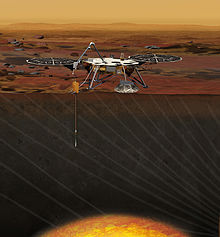The surface of Mercury is different than that of other planets. It resembles the surface of a meteorite more than the surfaces of Earth or Mars for instance. The Mercury Messenger probe has new data. Check the source link for a sample photograph:
Now, 205 measurements of Mercury’s surface composition, made by the X-ray spectrometer onboard Messenger, reveal how much Mercury’s surface differs from those of other planets in the solar system.
“Being the closest planet to the sun does mean its formation history would be different and more extreme than the other terrestrial planets, with hotter temperatures and exposure to a stronger gravitational field,” says lead study author Shoshana Weider, a planetary geologist at the Carnegie Institution of Washington.
The surface is dominated by minerals high in magnesium and enriched in sulfur, making it similar to partially melted versions of an enstatite chondrite, a rare type of meteorite that formed at high temperatures in low-oxygen conditions in the inner solar system.
“The similarity between the constituents of these meteorites and Mercury’s surface leads us to believe that either Mercury formed via the accretion of materials somewhat like the enstatite chondrites, or that both enstatite chondrites and the Mercury precursors were built from common ancestors,” Weider said.
More at Scientific American.

